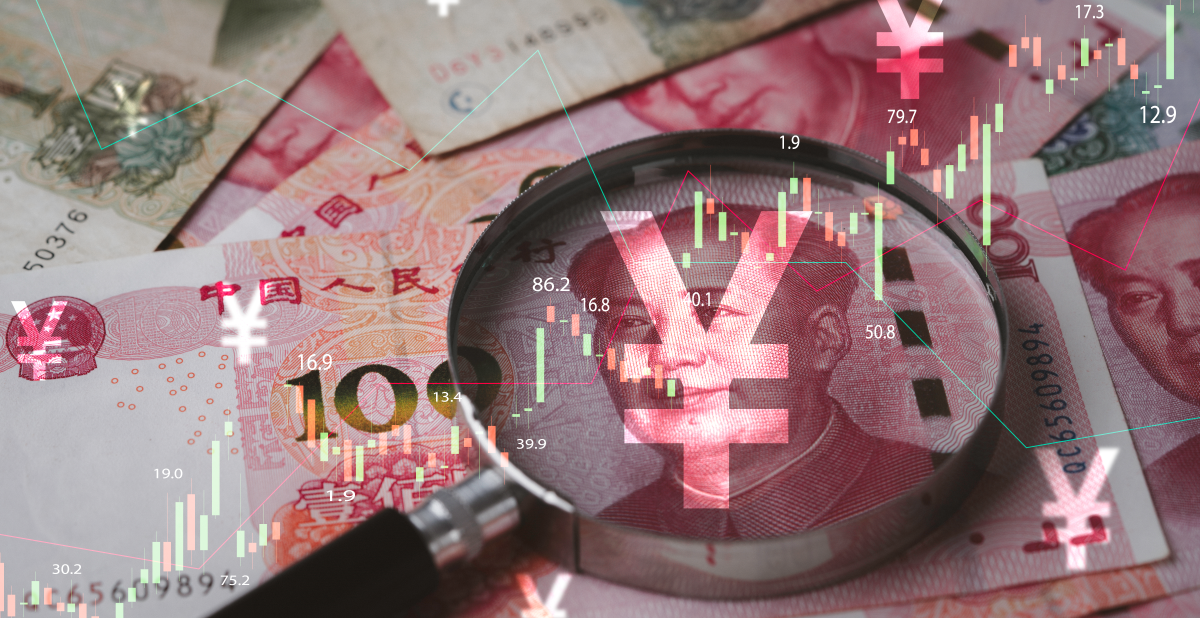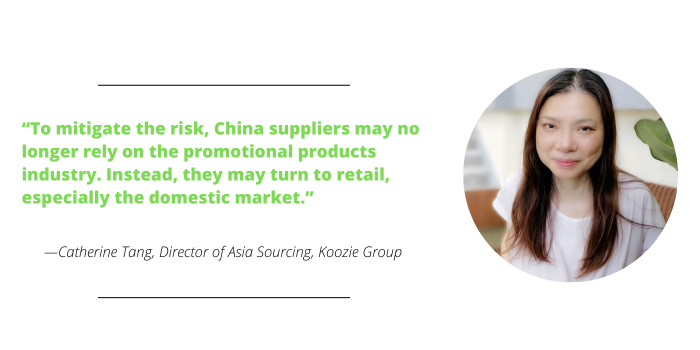How Deflation In China May Impact Promo

While the United States continues to contend with inflation, China is teetering on the edge of deflation, which could cause a ripple effect across the globe.
Deflation would disrupt the promotional products industry, potentially upending the entire supply chain, according to Catherine Tang, director of Asia sourcing at Clearwater, Florida-based Koozie Group (PPAI 114187, S13) – promo’s 10th leading supplier in this year's PPAI 100.
“China suppliers may be less willing to invest in research and product development, resulting in a lot fewer new products proposed and launched,” Tang says. “China suppliers may also be less willing to invest in expanding their production capacity because they’re receiving fewer orders.”
Falling Prices, Consumer Stagnation
The most recent data from China’s National Bureau of Statistics (NBS) has some economists concerned about the world’s second-largest economy.
- The country’s producer price index (PPI), which measures the change in the prices paid to Chinese producers of goods and services, decreased for a ninth consecutive month in June, down 5.4% from the prior year, according to the NBS. That’s the biggest drop since December 2015.
- Meanwhile, the country’s consumer price index (CPI), which measures the change in prices paid by Chinese consumers, was flat year over year in June, according to the NBS. Driven by a 7.2% decline in pork prices, June’s CPI was down from the 0.2% gain in May.
- In July, the NBS reported that China’s gross domestic product (GDP) for the second quarter grew 6.3% from a year ago, missing market expectations by a full point. Furthermore, it showed only 0.8% growth from the first quarter.
Although falling prices for steel and chemicals may provide immediate relief to American businesses relying upon Chinese factories, a deluge of cheap Chinese exports could undercut the competition in global markets. “As a last resort, China suppliers may cut their prices to grab or maintain market share,” Tang says. “This action poses a threat to U.S. manufacturers, who may need to also lower their prices to remain competitive.”
Short-Term Relief
Deflation could also unravel new supply chains that promo firms have created in response to tariffs (as high as 25%) imposed by the Trump administration on Chinese imports.
“The tariffs forced us to go to other countries to purchase products,” says Ben Zhang, president and CEO of Issaquah, Washington-based Greater Pacific (PPAI 191353, S9) – ranked the No. 48 supplier in the PPAI 100.
“We’ve tried Vietnam, Cambodia, the Philippines, India, but they take forever to get a product made and shipped to us. So, we have to stay with China because it’s faster. Time is money, too.”
Zhang says that most corporate buyers are too busy to plan a year ahead and often need products within 45 days – 75 days at most. Because of the time crunch, it just makes more sense to eat the cost and continue doing business with China.
 But deflation could help offset that cost. The yuan – China’s currency – has been losing value throughout the year, with the current conversion rate at 7.19 Chinese yuan to one U.S. dollar. The lowest value for the yuan on record is 8.28 to the U.S. dollar, set in 2005.
But deflation could help offset that cost. The yuan – China’s currency – has been losing value throughout the year, with the current conversion rate at 7.19 Chinese yuan to one U.S. dollar. The lowest value for the yuan on record is 8.28 to the U.S. dollar, set in 2005.
“When the Chinese currency devaluates, our U.S. dollar becomes stronger,” Zhang says. “That means the products we import from Chinese factories become cheaper, which favors U.S. consumers. It would benefit us and help with our overall budget.”
While deflation in China may be a short-term boon for promo, Tang says it comes with the risk of long-term damage.
“We may see shorter lead times because production capacity in factories isn’t fully occupied due to less demand and overstock,” Tang says. “To mitigate the risk, China suppliers may no longer rely on the promotional products industry. Instead, they may turn to retail, especially the domestic market.”
Why Is China’s Economy Struggling?
The slowed economic growth stems from China waiting until last December to drop COVID-19 restrictions and reopen the country. After a surge of economic activity immediately following the policy change, consumer spending has seemingly dried up as residents aim to save money and repair their balance sheets from the damage of lockdowns. According to Jens Presthus, associate director of advisory firm Global Counsel, household debt in China has ballooned to 1.5 times that of income, The Wall Street Journal reported.
 “The Chinese economy hasn’t returned to pre-COVID level,” Zhang says. “During the lockdowns, people couldn’t go to work and tourists couldn’t enter the country. Now, the Chinese economy is weak and has shrunken.”
“The Chinese economy hasn’t returned to pre-COVID level,” Zhang says. “During the lockdowns, people couldn’t go to work and tourists couldn’t enter the country. Now, the Chinese economy is weak and has shrunken.”
In an attempt to reverse China’s fortune, The People's Bank of China (PBOC) cut its benchmark loan prime rates (LPR) – which affect mortgage pricing – for the first time in 10 months in June, Reuters reported. With the 10-basis point reduction in the five-year LPR being smaller than anticipated, most economists expect China’s central bank to make another cut later this year.
Additionally, the government has announced a series of broad measures aimed to stimulate the economy, such as improving infrastructure, lifting restrictions on consumption and organizing food festivals and other events promoting consumption of goods, CNN reported.
However, concrete support, like the stimulus checks that the U.S. government issued to citizens during the pandemic, has yet to come to fruition. Perhaps one of the reasons is the high level of debt that many Chinese businesses and local governments, which have traditionally channeled Beijing’s fiscal stimulus, currently carry.
- Local government financing vehicles hold more than 59 trillion yuan [$8.16 trillion] in interest-paying debt and payables – around 50% of China’s GDP, Ian Hutchinson, a spokesperson for independent research organization Rhodium Group, told Voice of America.
Despite the growing fears, Liu Guoqiang, deputy governor of the People’s Bank of China, remains confident in China’s post-pandemic economic recovery. “At this time, there is no deflation, and there will be no risk of deflation in the second half of the year,” Guoqiang told the media in July, according to CNBC.

